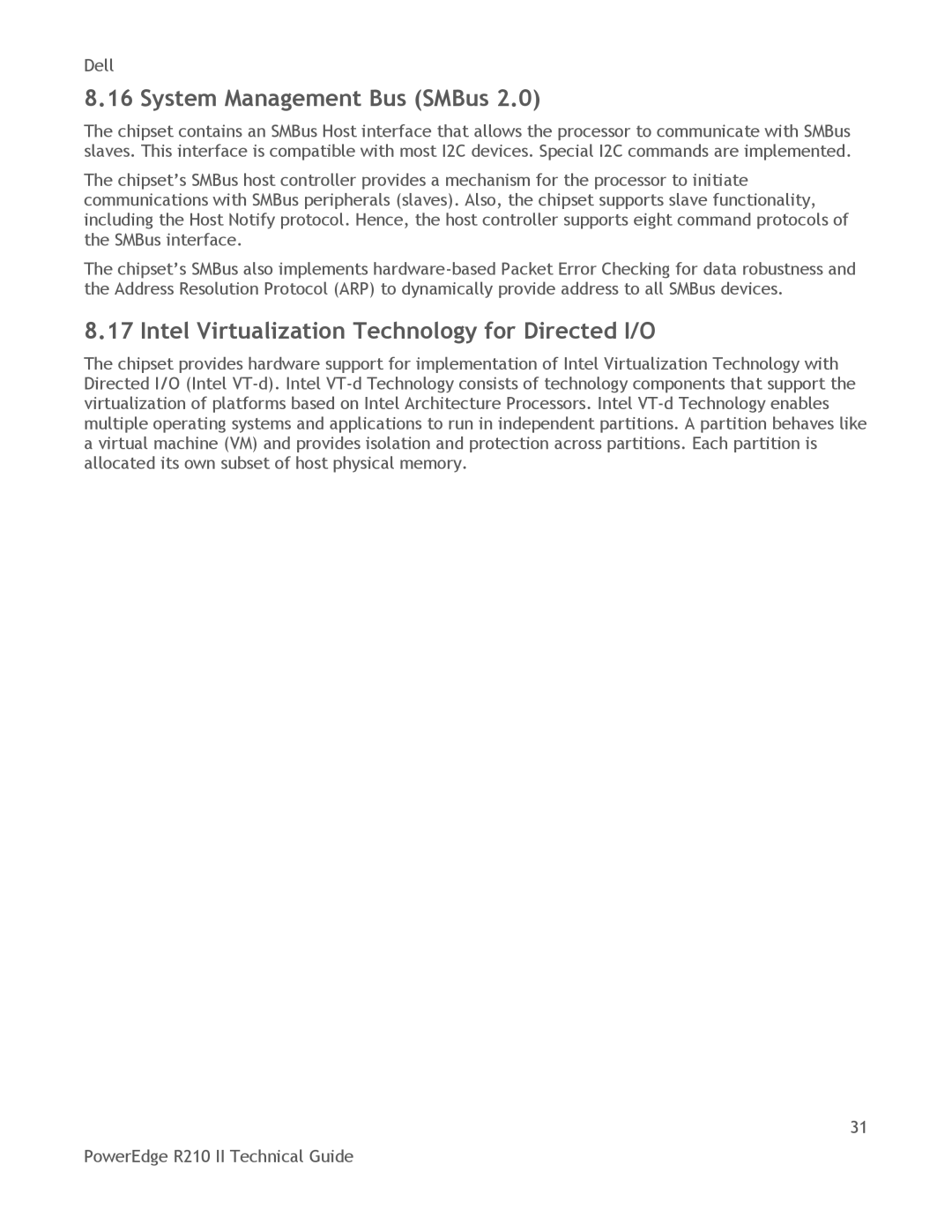Dell
8.16 System Management Bus (SMBus 2.0)
The chipset contains an SMBus Host interface that allows the processor to communicate with SMBus slaves. This interface is compatible with most I2C devices. Special I2C commands are implemented.
The chipset‘s SMBus host controller provides a mechanism for the processor to initiate communications with SMBus peripherals (slaves). Also, the chipset supports slave functionality, including the Host Notify protocol. Hence, the host controller supports eight command protocols of the SMBus interface.
The chipset‘s SMBus also implements
8.17 Intel Virtualization Technology for Directed I/O
The chipset provides hardware support for implementation of Intel Virtualization Technology with Directed I/O (Intel
31
PowerEdge R210 II Technical Guide
